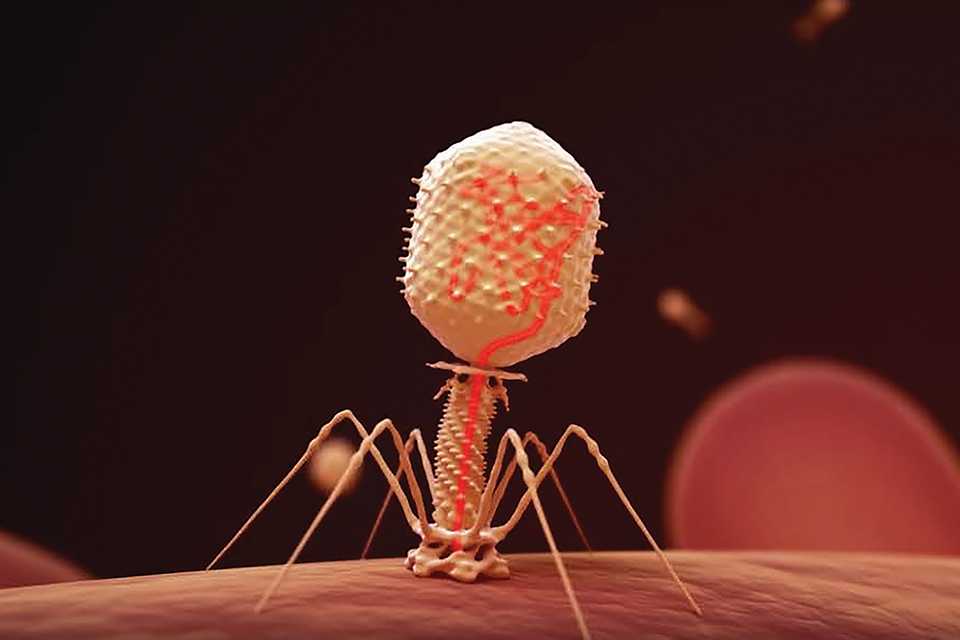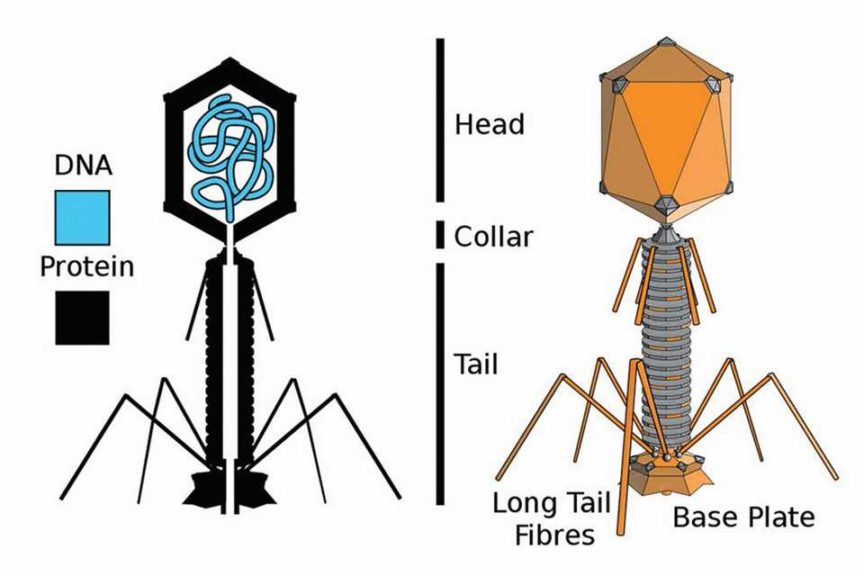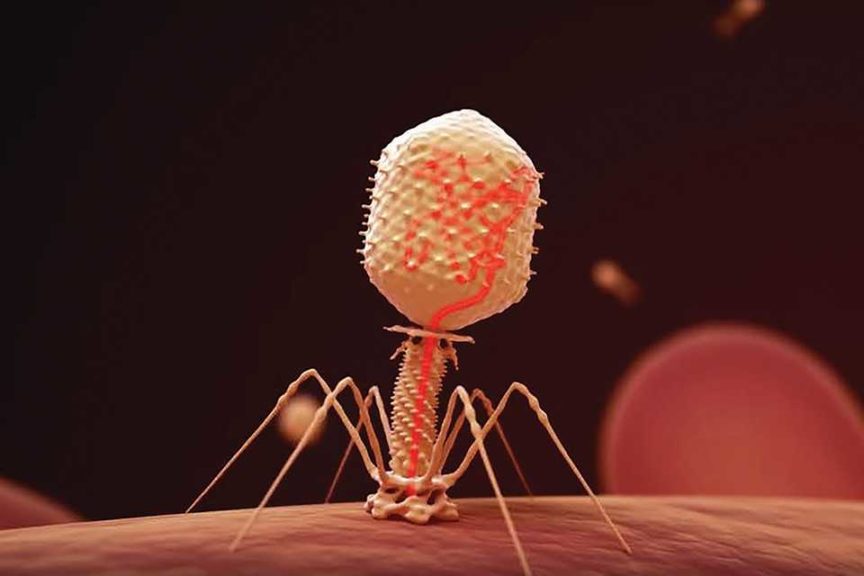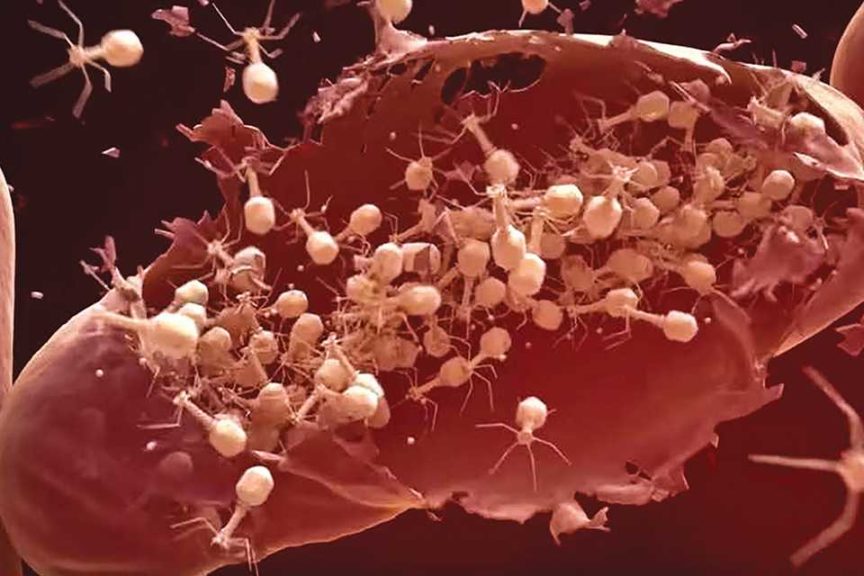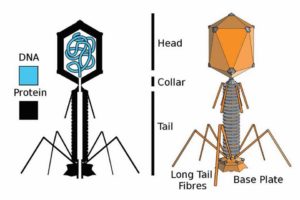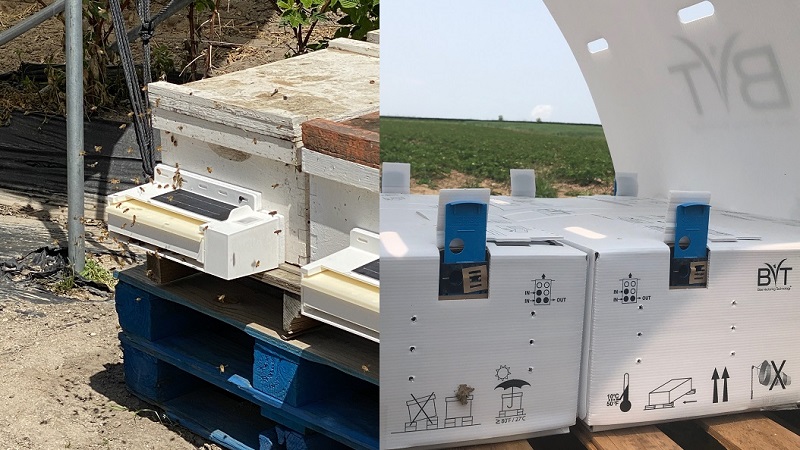Ways Phages Can Stymie Stubborn Fruit Crop Pests
For being darn near omnipresent, phages sure are tough to get a handle on. A lot has to do with their size, as they can’t be viewed without an electron microscope. But there are an awful lot of them, an estimated 10 million trillion trillion. In fact, there are some in your gut right now – and your soils, your water, maybe your crops.
The full name is “bacteriophage,” and it means “bacteria-eater.” Phages are viruses that lock onto and destroy bacteria most efficiently. They would seem to be ideal for anyone looking to take care of a nasty bacterial infection. So why aren’t they better understood?
They were first recognized in 1917 by a French-Canadian microbiologist named Félix d’Herelle, who gave phages their name. But they didn’t really catch on with U.S. scientists who have largely since been focused on antibiotics, which were better understood and easier to reproduce. (Phages are tough to reproduce in a lab.) Like antibiotics, work on phages has mostly been focused on their use in medicine. Problems with resistance, however, have caused a renewed look at phages, not only in medicine, but in agriculture.
COMMERCIAL APPLICATION
The first U.S. company to commercialize phages for agricultural use was Omnilytics, Inc., which was formed in Sandy, UT, in 2002. Its targets were bacterial diseases on vegetables, says the company’s Chief Operations Officer, Tyler Homer, such as tomato speck or pepper spot, and they were targeted at field growers in Florida, as well as greenhouse growers in the Northeast U.S. and Canada, says the company’s Chief Operations officer, Tyler Homer.
Through the years, the company has developed other products such as in 2011 for tomato bacterial canker. All the products have the same root name, AgriPhage, though are differentiated with additional letters according to the bacteria they control. For example, on tomato canker, the product is called AgriPhage CMM.
In 2018, Omnilytics came out with products for fruit, including citrus canker (AgriPhage XCC) and, perhaps most prominently, fire blight in apples and pears (AgriPhage EA).
In order to expand the reach of the fruit products to a broader market, Homer said Omnilytics entered into a sales and marketing agreement with Certis USA of Columbia, MD. Omnilytics continues to do all the research and development, as well as manufacturing, but Certis does the marketing, sales, and distribution.
“We wanted to expand AgriPhage to a broader market, and Certis seemed the way to go for the citrus canker and fire blight products,” he says. “We kept our labels for peppers and tomatoes.”
Michael Dimock, VP, Field Development and Tech Services for Certis, says they are interested in how AgriPhage will fit in fruit growers’ arsenals. It’s the only product line that utilizes bacteriophages in the U.S., other than on Xylella fastidiosa.
“Phages are unique, very specifically targeted toward bacteria, and they have a lot of promise,” Dimock says. “It’s a new and exciting technology that’s making a difference in vegetable crops, and we’re hoping it make a similar difference in fruit crops.”
LOW ENVIRONMENTAL IMPACT
Phages’ beauty lies in the fact though they are all around, they don’t have any impact on anything but the bacteria, says Homer.
“Growers should appreciate the technology,” he says. “AgriPhage will not build up in your soil, won’t damage your equipment, does not even tarnish reflective material.”
But perhaps most importantly, he says, phages are safe.
“AgriPhage for fire blight doesn’t even have a caution word,” he says, “and the REI (re-entry interval) is just four hours.”
Phages only destroy certain bacteria. AgriPhage EA, being designed to destroy the bacteria that causes fire blight, Erwinia amylovora, will not affect beneficial bacteria. It also doesn’t have impacts that chemicals designed to control fire blight, such as copper, may have, such as phytotoxicity.
“If you have plant or tree with no phytotoxicity,” he says, “the plant can focus its energy on building healthier fruit.”
ORGANIC APPROVAL
AgriPhage is an organic product, approved by EPA/National Organic Program, though it is not yet OMRI certified.
Also, phages have no resistance issues. This is a real key with fire blight, where apple and pear growers have struggled because of antibiotic resistance, and Florida growers because of copper resistance.
“We’re finding 90%-plus of bacteria are copper-resistant,” he says. “Florida universities are slowly changing their tune about use of copper on bacteria.”
That’s not to say resistance to phages is impossible, adds Homer.
“But, if we do see resistance developing, we can change out the type of bacteriophage used,” he says. “It can be immediate; we don’t need to wait for EPA approval.”
In fact, that’s why phage products rarely include a single phage. Most AgriPhage formulations contain anywhere from five to eight phages.
“It’s usually a cocktail of phages,” he says, “with several more available if one doesn’t work.”
However, Homer hastens to add that it is a biological product; and as such, Omnilytics doesn’t claim 100% control. They have seen a 65% to 75% reduction in fire blight in university trials, the third year they have been conducted. This past year was the first commercial season, albeit on a limited basis, and the company is looking forward to seeing 2020 results.
However, despite the fact that many growers use the phages in combination with other antibacterial materials, such as copper, it’s not necessary.
“We have tomato growers in Florida and Canada who have used only AgriPhage,” he notes.
And while other growers do use it in combination with copper, he emphasizes the product cannot be tank-mixed with copper.
In addition, although greenhouse application recommendations for AgriPhage are similar to those for field applications, there are some variations that should be considered, and growers are encouraged to contact Omnilytics.
Not Just For Spraying
Using phage technology several years ago, scientists at Texas A&M University figured out how to use such viruses to combat the bacteria that causes Pierce’s disease (Xylella fastidiosa) in grapes.
Carlos Gonzalez, Professor in the Department of Plant Pathology and Microbiology at Texas A&M, developed the phage cocktail that combats Pierce’s disease by isolating the phages from the plants and weeds around infected vineyards.
Gonzalez was able to find the phages in the wild, culture them in the lab and put them together to create the cocktail. Different from a spray product like AgriPhage, this cocktail must be injected into the cordons of vines, because the phages must come into direct contact with the bacteria to enable destruction.




